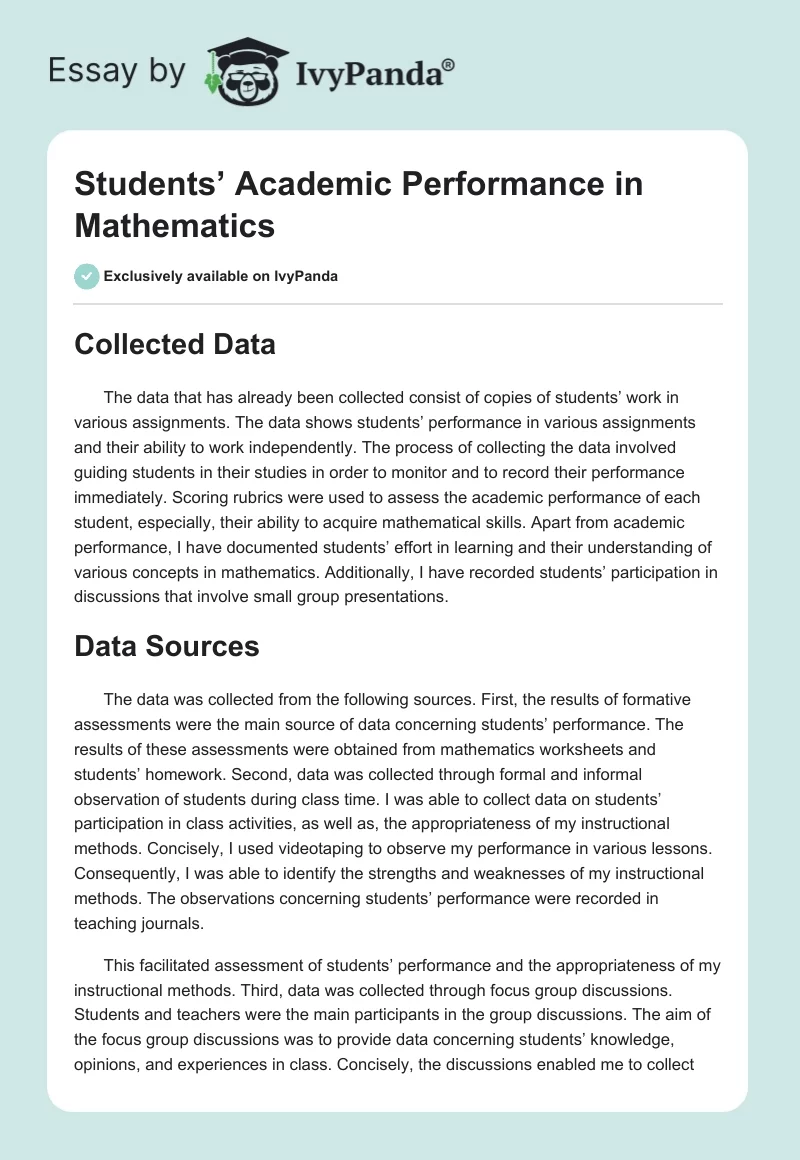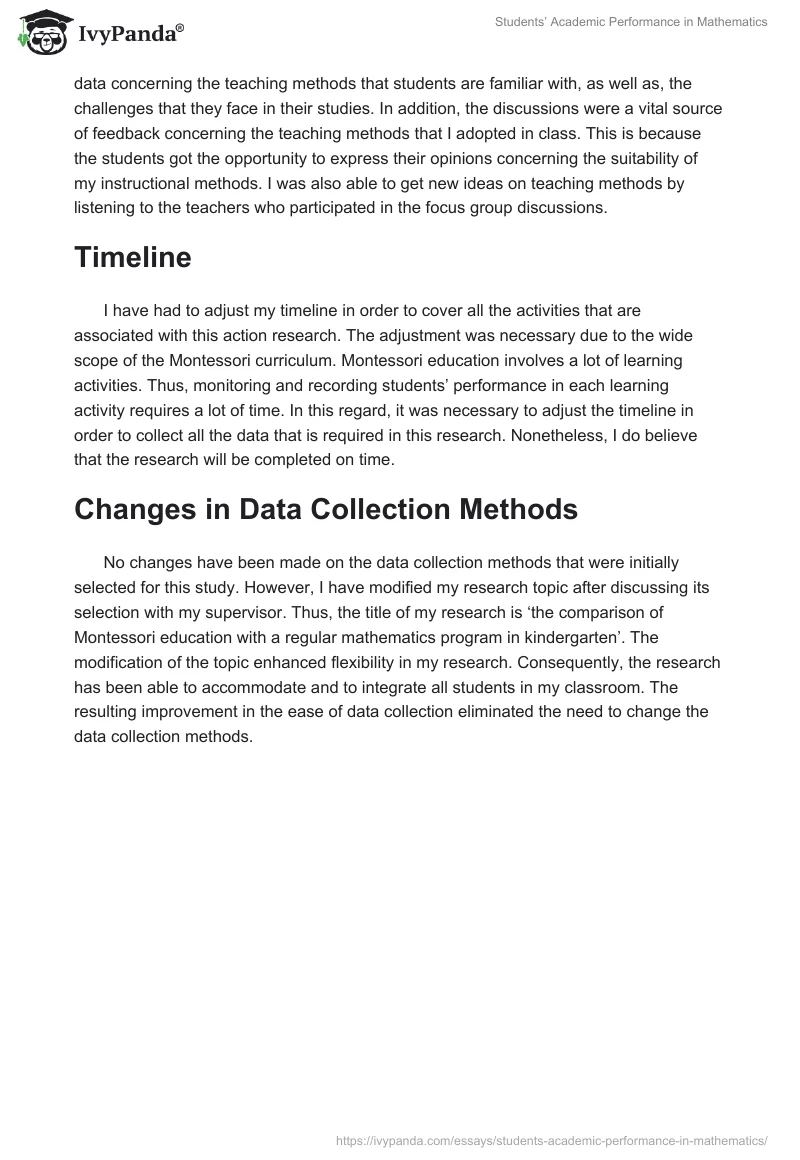Collected Data
The data that has already been collected consist of copies of students’ work in various assignments. The data shows students’ performance in various assignments and their ability to work independently. The process of collecting the data involved guiding students in their studies in order to monitor and to record their performance immediately. Scoring rubrics were used to assess the academic performance of each student, especially, their ability to acquire mathematical skills. Apart from academic performance, I have documented students’ effort in learning and their understanding of various concepts in mathematics. Additionally, I have recorded students’ participation in discussions that involve small group presentations.
Data Sources
The data was collected from the following sources. First, the results of formative assessments were the main source of data concerning students’ performance. The results of these assessments were obtained from mathematics worksheets and students’ homework. Second, data was collected through formal and informal observation of students during class time. I was able to collect data on students’ participation in class activities, as well as, the appropriateness of my instructional methods. Concisely, I used videotaping to observe my performance in various lessons. Consequently, I was able to identify the strengths and weaknesses of my instructional methods. The observations concerning students’ performance were recorded in teaching journals.
This facilitated assessment of students’ performance and the appropriateness of my instructional methods. Third, data was collected through focus group discussions. Students and teachers were the main participants in the group discussions. The aim of the focus group discussions was to provide data concerning students’ knowledge, opinions, and experiences in class. Concisely, the discussions enabled me to collect data concerning the teaching methods that students are familiar with, as well as, the challenges that they face in their studies. In addition, the discussions were a vital source of feedback concerning the teaching methods that I adopted in class. This is because the students got the opportunity to express their opinions concerning the suitability of my instructional methods. I was also able to get new ideas on teaching methods by listening to the teachers who participated in the focus group discussions.
Timeline
I have had to adjust my timeline in order to cover all the activities that are associated with this action research. The adjustment was necessary due to the wide scope of the Montessori curriculum. Montessori education involves a lot of learning activities. Thus, monitoring and recording students’ performance in each learning activity requires a lot of time. In this regard, it was necessary to adjust the timeline in order to collect all the data that is required in this research. Nonetheless, I do believe that the research will be completed on time.
Changes in Data Collection Methods
No changes have been made on the data collection methods that were initially selected for this study. However, I have modified my research topic after discussing its selection with my supervisor. Thus, the title of my research is ‘the comparison of Montessori education with a regular mathematics program in kindergarten’. The modification of the topic enhanced flexibility in my research. Consequently, the research has been able to accommodate and to integrate all students in my classroom. The resulting improvement in the ease of data collection eliminated the need to change the data collection methods.


